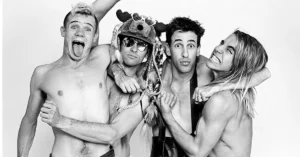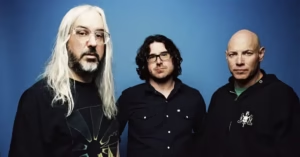Blondie: Punk Rebels, Pop Innovators, and New Wave Icons
Blondie. Formation and Early Scene
Blondie was formed in New York City in 1974 by:
- Debbie Harry – Vocals
- Chris Stein – Guitar
- Joined by Clem Burke (drums), Jimmy Destri (keyboards), Gary Valentine (bass), later Frank Infante and Nigel Harrison
Emerging from the gritty downtown scene of CBGB and Max’s Kansas City, Blondie stood out in the early punk movement for their glam-influenced look, retro-pop sensibility, and Debbie Harry’s charismatic presence.
Originally dismissed by critics as “too pop” for punk, Blondie would redefine the boundaries of new wave music.
Blondie. Rise of the New Wave: Early Albums (1976–1978)
✦ Blondie (1976)
Produced by Richard Gottehrer, the debut album channeled 1960s girl group melodies through punk energy.
Key tracks:
- “X Offender”
- “In the Flesh” – Surprisingly a hit in Australia
- “Rip Her to Shreds” – Satirical and defiant
✦ Plastic Letters (1978)
Still raw but more ambitious.
Includes:
- “Denis” – A gender-flipped cover of Randy & the Rainbows
- “(I’m Always Touched by Your) Presence, Dear”
Blondie. Mainstream Breakthrough and Global Fame (1978–1981)
✦ Parallel Lines (1978)
The band’s masterpiece, produced by Mike Chapman, blended punk, pop, and disco.
Iconic tracks:
- “Heart of Glass” – A disco-pop smash and U.S. #1
- “One Way or Another” – A new wave stalker anthem
- “Hanging on the Telephone” – A power-pop classic
- “Picture This”
This album made Blondie international stars and helped usher in the new wave era.
✦ Eat to the Beat (1979)
More experimental and diverse.
Highlights:
- “Dreaming” – Fast, melodic, and shimmering
- “Atomic” – Disco meets punk apocalypse
- “Union City Blue”
✦ Autoamerican (1980)
Marked a stylistic shift toward eclecticism.
- “The Tide Is High” – A cover of a Jamaican rocksteady hit (U.S. #1)
- “Rapture” – The first U.S. #1 song to feature rap vocals, pioneering the fusion of hip hop and pop
This cemented Blondie as genre-bending innovators, never afraid to experiment.
Blondie. Decline, Breakup, and Solo Work (1982–1996)
After The Hunter (1982) failed to meet expectations, the band disbanded in 1982.
Debbie Harry pursued a solo career, exploring funk and electronic music, and also acted in cult films like Videodrome and Hairspray.
Chris Stein suffered serious health issues, delaying any possible reunion.
Despite this, Blondie’s influence continued to grow in the underground and on MTV-era artists.
Blondie. Comeback and Modern Era (1997–Present)
✦ No Exit (1999)
Their comeback album featured:
- “Maria” – A surprise UK #1 hit, 20 years after their first
Blondie proved they were more than a legacy act, embracing modern production and themes while maintaining their classic edge.
Later albums:
- The Curse of Blondie (2003) – “Good Boys”
- Panic of Girls (2011)
- Pollinator (2017) – Featuring collaborations with Sia, Johnny Marr, and Charli XCX
The band continues to tour globally, with Debbie Harry, Clem Burke, and Chris Stein as core members. Blondie remains a major presence in pop culture and music festivals.
Blondie. Legacy and Influence
Blondie’s legacy includes:
- Pioneering genre fusion — punk, pop, reggae, disco, rap
- Being one of the first U.S. new wave bands to break internationally
- Debbie Harry’s trailblazing image as a female frontwoman: stylish, subversive, iconic
- Influencing artists from Madonna, Gwen Stefani, and Lady Gaga to Paramore and Garbage
They’ve sold over 40 million records, and their songs remain radio staples and soundtrack favorites.
Accolades:
- Inducted into the Rock and Roll Hall of Fame (2006)
- “Heart of Glass,” “Rapture,” and “Call Me” are among Rolling Stone’s best songs lists
- Celebrated as fashion icons and music visionaries
VII. Interesting Facts
- “Rapture” name-drops Fab Five Freddy and Grandmaster Flash, helping introduce rap to mainstream pop
- Debbie Harry once turned down offers to join The Ramones and pose for Playboy
- The Parallel Lines album cover became an iconic visual reference for punk fashion
- “Call Me” was co-written with Giorgio Moroder for the film American Gigolo




